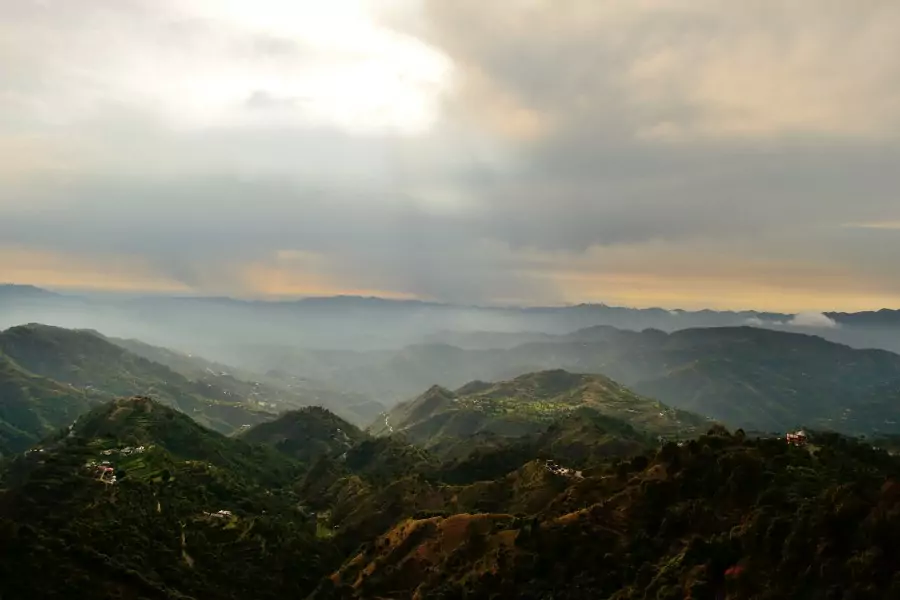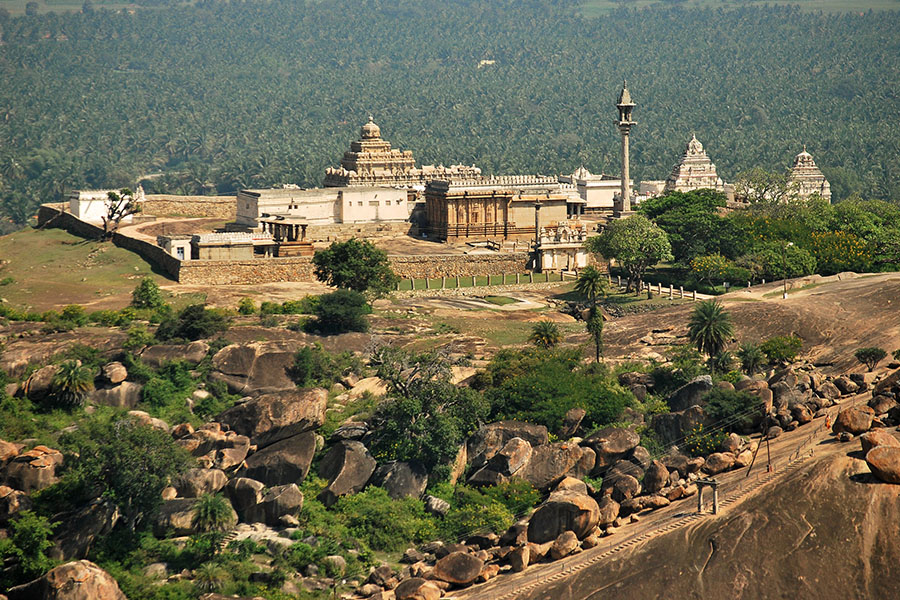Madurai Meenakshi Temple: History, Architecture, Festivals, & Travel Tips

The Madurai Meenakshi Temple, located in the historic city of Madurai, Tamil Nadu, stands as a testament to India’s rich cultural and architectural heritage. Dedicated to the goddess Meenakshi and her consort Sundareshwar, this temple not only serves as a major pilgrimage site but also a magnificent example of Dravidian architecture.
Overview of Madurai Meenakshi Temple

The temple is a symbol of the artistic and spiritual richness of South India. With its towering gopurams, intricate carvings, and vibrant festivals, the Meenakshi Temple attracts millions of devotees and tourists each year. This guide explores the temple’s history, architectural features, cultural significance, and essential travel advice to make your visit memorable.
Importance and Relevance
The Madurai Meenakshi Temple holds a prominent place in Hindu religious practices and South Indian architecture. Its historical significance reflects the evolution of temple architecture and religious rituals over centuries. Understanding the temple’s past and present helps appreciate its role in both historical and contemporary contexts.
Historical Background
Ancient Origins
The origins of the Madurai Meenakshi Temple trace back over 2,500 years. According to historical records, the temple was originally constructed by the Pandya dynasty. The temple’s early structures were modest compared to its current grandeur, with significant expansions and renovations occurring over the centuries.
Key Historical Periods
- Pandya Dynasty Contributions: The Pandya kings, who ruled from the 6th to the 16th centuries, laid the foundation of the temple. The earliest structures from this period included the core sanctum and basic temple precincts.
- Nayak Period: The 16th century saw substantial architectural developments under the Nayak dynasty. The Nayaks, particularly King Tirumalai Nayak, significantly expanded the temple complex, adding majestic gopurams and elaborately carved halls. The Nayak period also introduced the vibrant sculptures and intricate carvings that adorn the temple today.
- Colonial Era: During British colonial rule, the temple’s management faced challenges, but its spiritual significance remained intact. The British period saw the preservation and restoration of the temple’s structures, ensuring its continued prominence.
Legends and Myths
The temple is enveloped in numerous legends. One popular story narrates how the goddess Meenakshi emerged from a sacred fire, symbolizing divine attributes and purpose. These myths not only enrich the temple’s spiritual narrative but also contribute to its revered status among devotees.
Architectural Wonders
Dravidian Architecture
The Madurai Meenakshi Temple is a prime example of Dravidian architecture, renowned for its towering gopurams (gateway towers), intricate sculptures, and expansive courtyards. This architectural style emphasizes grandiose and elaborate design, with a focus on verticality and ornamental details.
Major Structures
- Gopurams: The temple features 14 gopurams, each adorned with vibrant and detailed carvings of gods, goddesses, and mythological scenes. These towering gateways serve as both entrance points and symbols of divine protection.
- Sanctum Sanctorum: At the heart of the temple lies the sanctum sanctorum, where the deities Meenakshi and Sundareshwar are enshrined. This inner sanctum is the focal point of worship, with elaborate rituals and offerings performed daily.
- Thousand Pillar Hall: The Thousand Pillar Hall, or Aayiram Kaal Mandapam, is renowned for its 1,000 intricately carved pillars. Each pillar showcases exceptional craftsmanship and features detailed carvings depicting various deities and mythological narratives.
Sculpture and Art
The temple’s walls and pillars are richly adorned with carvings that depict gods, goddesses, and mythological stories. These sculptures highlight the artistic prowess of the craftsmen from the Dravidian era, showcasing their ability to blend artistry with religious symbolism.
Cultural Significance
Religious Practices
The Madurai Meenakshi Temple remains a central hub for Hindu religious practices. It hosts daily poojas (rituals), special ceremonies, and grand festivals that attract devotees from all over India and beyond. The temple’s rituals are integral to the spiritual life of the region.
Festivals and Events

- Meenakshi Thirukalyanam: This festival celebrates the divine marriage of Meenakshi and Sundareshwar. Held annually, it is marked by elaborate processions, music, and dance, drawing thousands of pilgrims and tourists.
- Chithirai Festival: An annual festival that highlights the temple’s cultural and religious importance. The Chithirai Festival features various events, including processions and cultural performances, and serves as a major attraction for visitors.
Pilgrimage
The Meenakshi Temple is a major pilgrimage site, symbolizing spiritual unity and devotion. Pilgrims from various regions visit the temple to seek blessings, participate in rituals, and experience the divine atmosphere of the temple.
Must-Visit Attractions Nearby
Tirumalai Nayak Palace

Located near the temple, the Tirumalai Nayak Palace is a splendid example of Nayak dynasty architecture. Its grand halls, intricate carvings, and historical significance make it a worthwhile visit.
Gandhi Memorial Museum

This museum, situated in Madurai, provides insights into the life and struggles of Mahatma Gandhi. It offers a historical perspective on India’s fight for independence and Gandhi’s role in it.
Azhagar Kovil

A short drive from Madurai, Azhagar Kovil is dedicated to Lord Vishnu and is celebrated for its scenic beauty and religious importance. The temple’s serene surroundings offer a peaceful retreat from the city’s hustle.
Unique Experiences
Temple Tours
Guided tours of the Meenakshi Temple offer an in-depth exploration of its history, architecture, and religious practices. These tours provide valuable insights into the temple’s significance and the stories behind its various features.
Local Cuisine
Madurai’s culinary scene offers a range of traditional South Indian dishes. Must-try items include dosas, idlis, and the unique Jigarthanda beverage. Exploring local eateries near the temple provides an authentic taste of Madurai’s food culture.
Travel Tips
Best Time to Visit
The ideal time to visit Madurai is from October to March. During these months, the weather is cooler and more comfortable, making it ideal for exploring the temple and other local attractions.
Accommodation
Madurai offers a range of accommodation options, from budget hotels to luxurious stays. Choosing a hotel close to the temple can enhance your visit, providing convenience and easy access to the temple complex.
Transportation
Madurai is well-connected by road, rail, and air. Local transportation includes buses, auto-rickshaws, and taxis. Planning your travel route and understanding local transport options can make your visit smoother and more enjoyable.
Safety and Health Precautions
Health Tips
Stay hydrated and use sunscreen, especially during hotter months. Additionally, wearing comfortable clothing and footwear is advisable for exploring the temple and its surroundings.
Safety Measures
Be aware of your belongings and follow local guidelines for temple conduct. Respect the temple’s customs and practices to ensure a respectful and enjoyable visit.
Budget Planning
Cost Estimates
When planning your trip to Madurai, consider expenses for accommodation, food, transportation, and entry fees to attractions. Creating a budget that includes both essential costs and extra activities will help manage your expenses effectively.
Local Cuisine
Must-Try Dishes

- Jigarthanda: A refreshing beverage made from milk, almond gum, and rose syrup, unique to Madurai.
- Kari Dosa: A spicy dosa variety served with a flavorful curry, showcasing Madurai’s rich culinary heritage.
Conclusion
The Madurai Meenakshi Temple is a monumental representation of South India’s cultural and spiritual heritage. Its historical depth, architectural brilliance, and vibrant festivals offer a rich and immersive experience for visitors. Whether exploring its ancient halls, participating in its lively festivals, or savoring local cuisine, the Meenakshi Temple promises a memorable journey through one of India’s most revered sacred sites.
By planning your visit during major festivals or taking part in guided tours, you can fully appreciate the grandeur and significance of this historic temple. Enjoy your exploration of the Madurai Meenakshi Temple and the vibrant city of Madurai!
People Also Ask
1. What is the significance of the Madurai Meenakshi Temple?
The Madurai Meenakshi Temple is significant due to its rich history, architectural grandeur, and role as a major pilgrimage site for Hindus. It serves as a central hub for religious practices and festivals, symbolizing spiritual unity and cultural heritage.
2. When is the best time to visit the Madurai Meenakshi Temple?
The best time to visit the Madurai Meenakshi Temple is from October to March when the weather is cooler and more comfortable for exploring the temple and nearby attractions.
3. What are the major festivals celebrated at the Meenakshi Temple?
The major festivals celebrated at the Meenakshi Temple include Meenakshi Thirukalyanam, which marks the divine marriage of Meenakshi and Sundareshwar, and the Chithirai Festival, known for its vibrant processions and cultural events.
4. How can I reach the Madurai Meenakshi Temple?
Madurai is well-connected by road, rail, and air. You can reach the temple by local transportation options such as buses, auto-rickshaws, and taxis. The nearest airport is Madurai Airport, and the railway station is well-connected to major cities.
5. What are some must-try dishes in Madurai?
Must-try dishes in Madurai include Jigarthanda, a unique beverage made from milk and rose syrup, and Kari Dosa, a spicy dosa variety served with flavorful curry. Exploring local eateries offers an authentic taste of Madurai’s culinary heritage.


